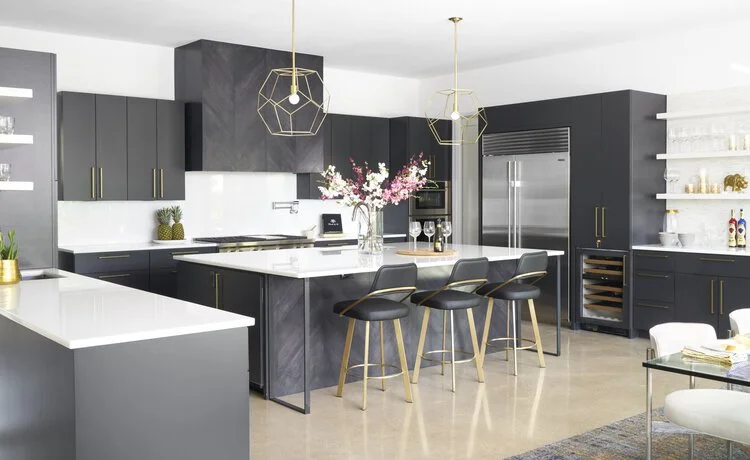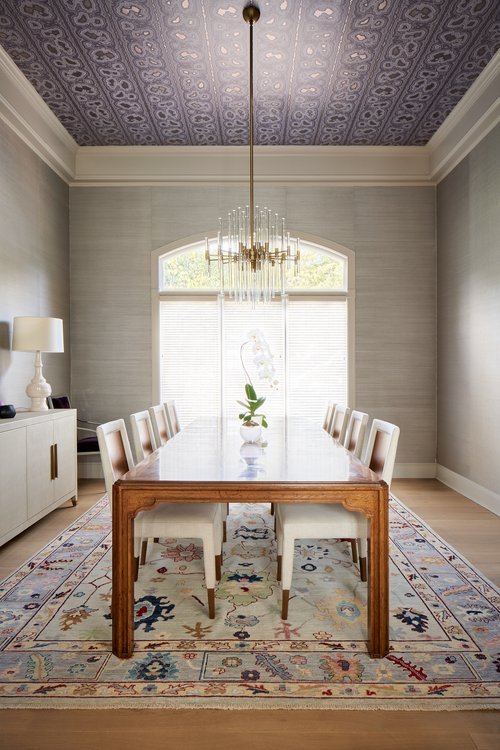The Architect’s Interior Lighting Guide
Our Austin Architects Review Top Considerations in Home Lighting Design
We all know that lighting can make or break a photo, but your home’s lighting design has an even bigger impact on daily function, mood, and aesthetics. While we tend to take good lighting for granted, it can be pretty tricky to get right! Our Austin architects shine a light on lighting design and share everything you need to know in our interior lighting guide. We cover lighting design basics, types of interior light fixtures, design considerations, and more to help you get started.
Interior Lighting Guide: Everything You Need to Know
Our interior lighting guide is filled with bright ideas and inspiration to help make your home shine. While this guide offers a general overview of basic lighting design considerations, it’s important to remember that every space is different and requires a unique lighting strategy. We recommend working with an experienced architect or lighting designer who can guide you through the process from start to finish.
3 Types of Interior Lighting
While lighting design is complex, it can be broken down into three main components necessary for any room.
Ambient
Ambient lighting provides general illumination to a space. You can think of this as your base layer of light. It is typically achieved through overhead fixtures such as flush mounts and recessed lights.
Task
Task lighting is designed for the task at hand and will vary depending on its purpose. It could include an office desk lamp or vanity lighting at a makeup counter. Often, task lighting will be brighter than ambient or accent lighting.
Accent
Accent lighting builds on ambient lighting to spotlight design features and create a focal point. Accent lights could include cabinet lighting or a wall-mounted picture light to draw attention to collectibles and art.
Lighting Design Considerations
Here are a few considerations to keep in mind when designing your lighting plan and selecting fixtures.
Lighting Placement
Lighting placement is key to a successful design. Consider how the space will be used and the best spots to install fixtures. For example, under-cabinet kitchen lights make cooking prep easier, and bedside articulating wall sconces provide the perfect reading light.
Natural Lighting
Natural light will also play into your overall interior lighting design. Consider how much or how little light the room gets and how it changes throughout the day.
Ceiling Height & Slope
Ceiling height and slope will affect what size fixture your space can accommodate. Pay close attention when shopping for chandeliers and pendants to ensure your fixtures are at the proper scale.
Light Temperature
Color temperature refers to how cool or how warm the glow of the light feels. Color temperature doesn’t affect the brightness. However, your eye might perceive warmer light levels as lower. Light temperature decisions will come down to preference and task. Just ensure the room is uniform.
Shadows
Be conscious of the shadows your light fixtures will cast. Our architects often avoid using ceiling fans with attached light kits because they can throw distracting oscillating shadows on the ceiling.
Types of Interior Light Fixtures
Flush Mount Lights
Flush mount lights are mounted directly to the ceiling. They are typically flat or dome-shaped and emit light downward.
Semi-flush Mount Lights
Semi-flush mount lights hang with a small space between the ceiling and the fixture's body, emitting light up and downward for better illumination.
Chandeliers
Chandeliers are larger and grander suspended light fixtures that can be accented with crystals. They are often used for more formal rooms.
Pendants
Pendants are a single light suspended by a wire or rod. They are typically installed in groups and are a popular choice above kitchen islands.
Ceiling Fans
Ceiling fans can be a solo fixture or include a light kit attachment. We prefer to use ceiling fans without light kits and illuminate the room with additional fixtures.
Recessed or Can Lights
Recessed or can lights are housed in the ceiling for a flush, streamlined appearance. They come in square and round options in various trim colors. We recommend using smaller recessed lights less than 4 inches in diameter for a cleaner look.
Directional Can Lights
Directional can lights can be adjusted to point the light at a specific focal point. These are great options for homeowners looking to highlight architectural focal points.
Track Lighting
Track lighting consists of monorail tracks with attached lights that can be adjusted into various positions, making them a great option for gallery walls.
LED Strip Lighting
LED strip lighting is a flexible option that can be installed under cabinets for task lighting or along baseboards or crown molding for modern accent lighting.
Vanity Lights
Vanity lights are mounted to the wall above or alongside vanity mirrors, typically in bathrooms or dressing rooms.
Wall Sconces
Sconces are mounted to the wall, typically to accent mirrors and art or provide illumination along hallways or staircases. Articulating wall sconces feature an adjustable arm, making them an excellent option for bedside lighting.
Picture Lights
Picture lights are mounted above artwork and feature a linear head and adjustable arm to achieve the perfect lighting angle.
Table and Floor Lamps
Table and floor lamps should be considered early in the architectural design to ensure proper wall and floor outlet placement. The project architect and interior designer should work together and collaborate on the layout.
Light Fixture Design Considerations
Here are a few style considerations to keep in mind when shopping for light fixtures.
Metallic Finishes
Light fixtures are available in a wide range of metallic finishes, including brass, chrome, black, and more. Your lighting should coordinate with other hardware and plumbing fixtures in the home, including faucets and cabinet pulls, to ensure a cohesive look.
Globe Shape & Finishes
The globe shape and finish on your fixtures will affect not only the visual style but also the light quality of the room. Pay close attention to how clear, tinted, and frosted glass options play into the look and function of the space.
Overall Design & Style
Consider the lines and style of your home, and find fixtures that further carry out your design goals. For example, sleek chrome fixtures complement a contemporary house, while black wrought iron will feel at home in a Mediterranean-inspired abode.
Lighting Upgrades
Finally, think about upgrades early in the lighting design process. Options like dimmers, remotes, and Smart Lighting can further improve the function and ambiance of your space.
Bright Ideas for Your Home Lighting Design
We hope this guide sparked some bright ideas for your home lighting plan. If you’re still feeling in the dark, don’t worry. Our team of Austin architects is here to help guide you through any of your lighting questions.
Ready for Exterior Lighting Design?
Read Our Outdoor Lighting Guide



